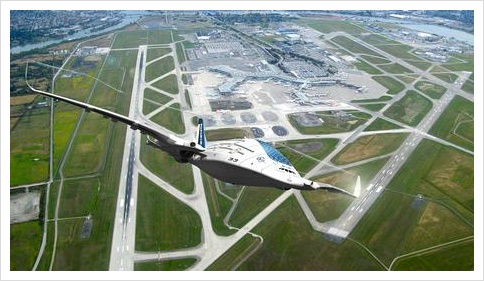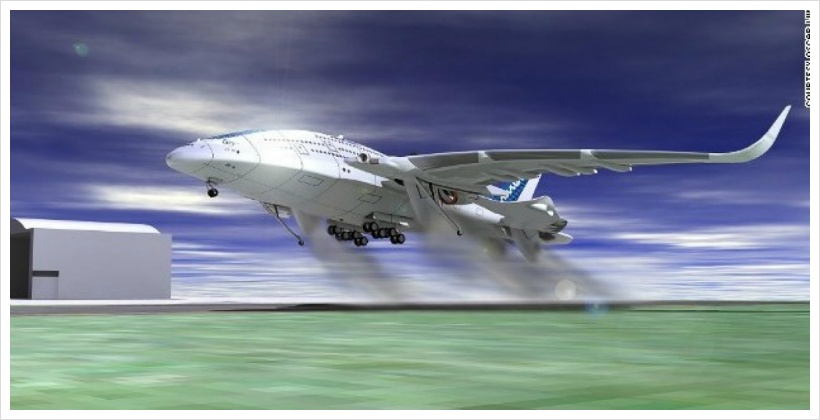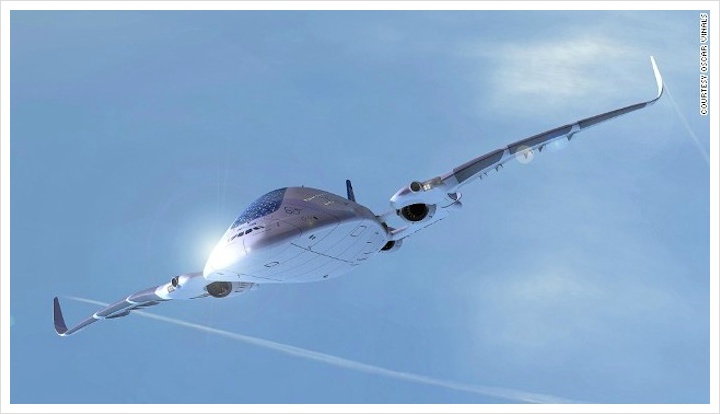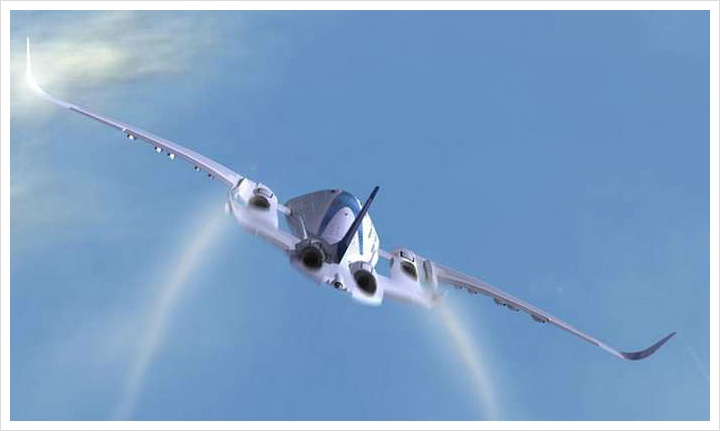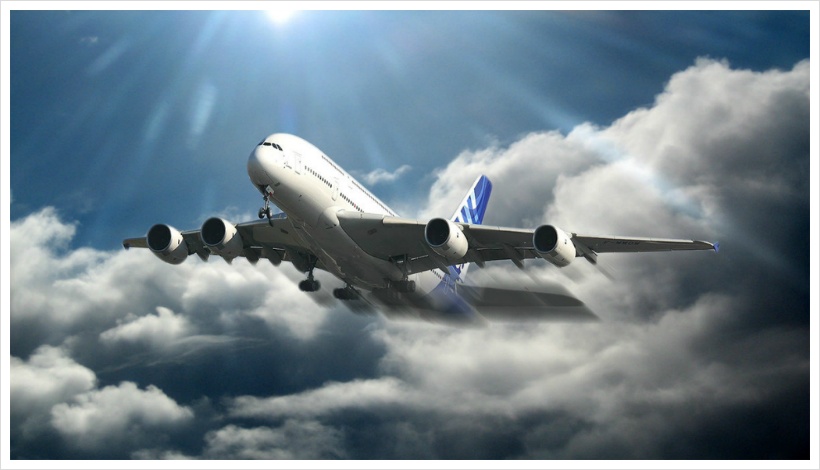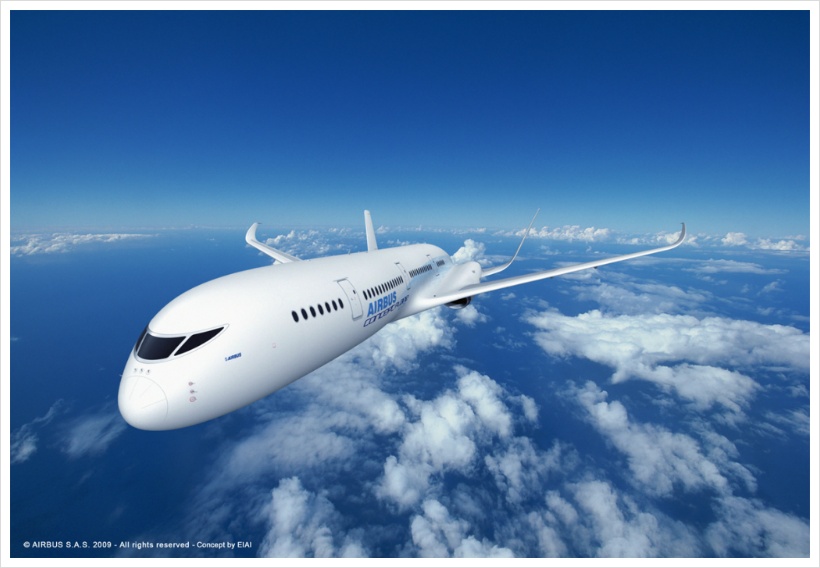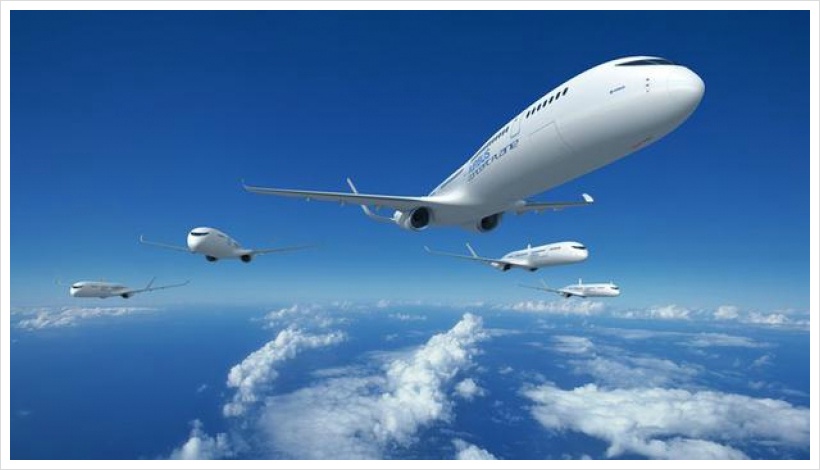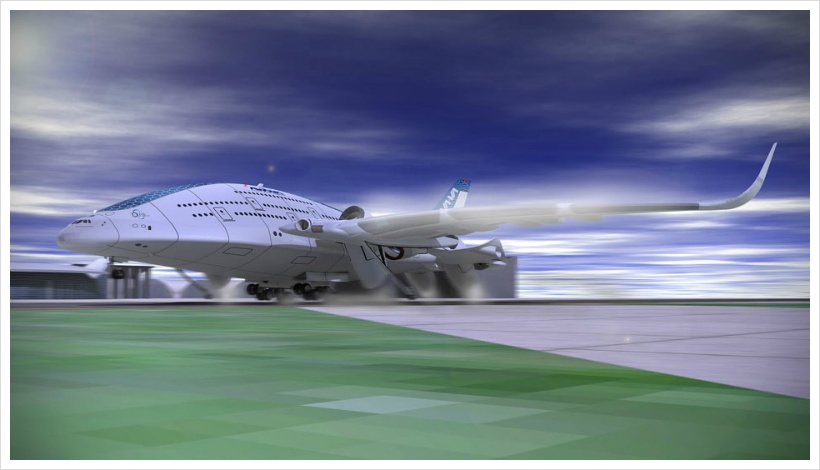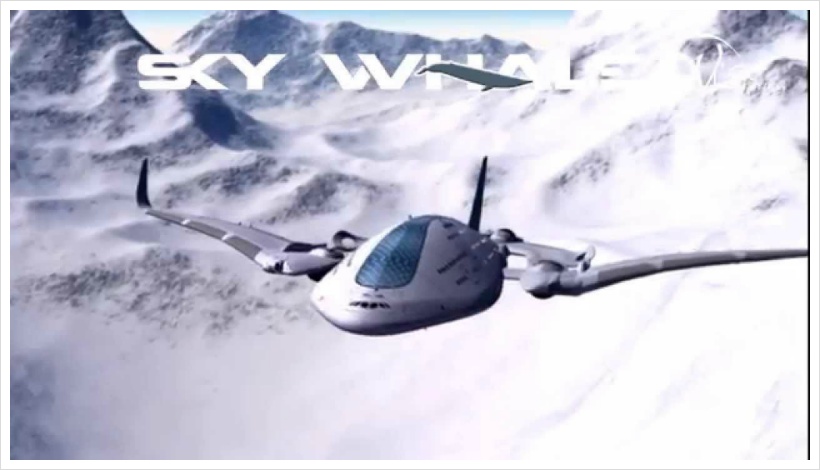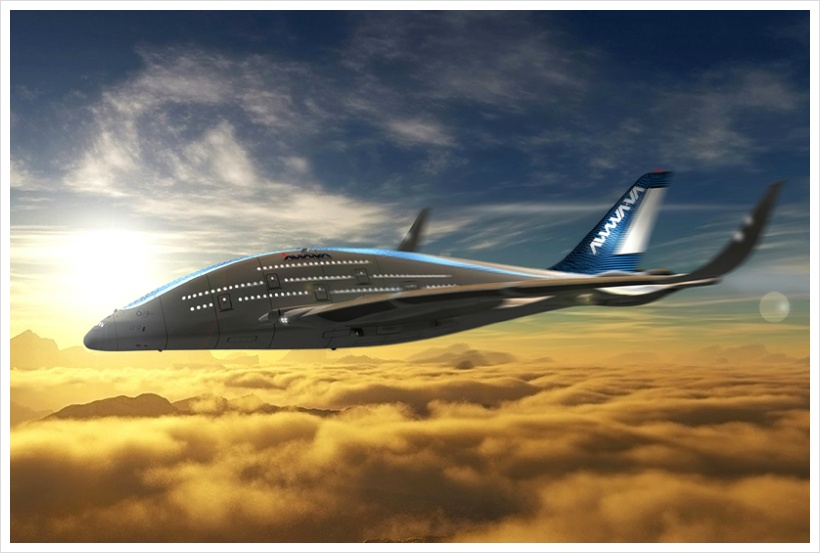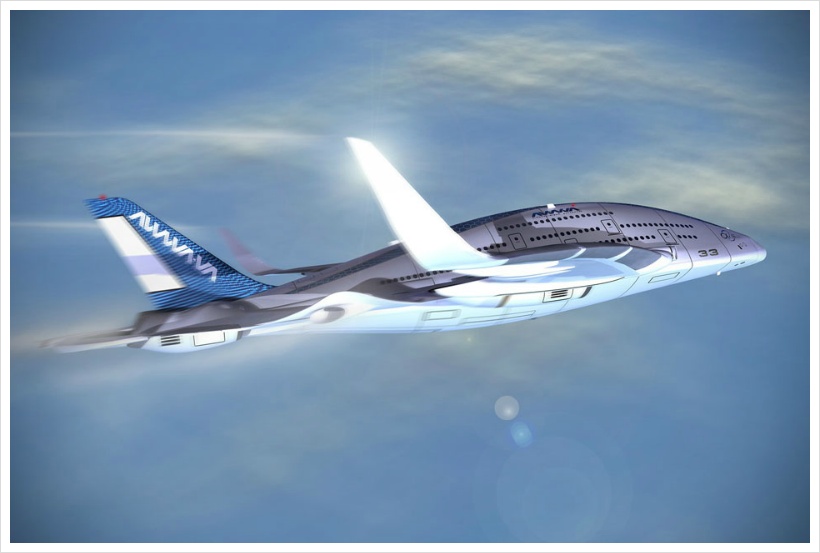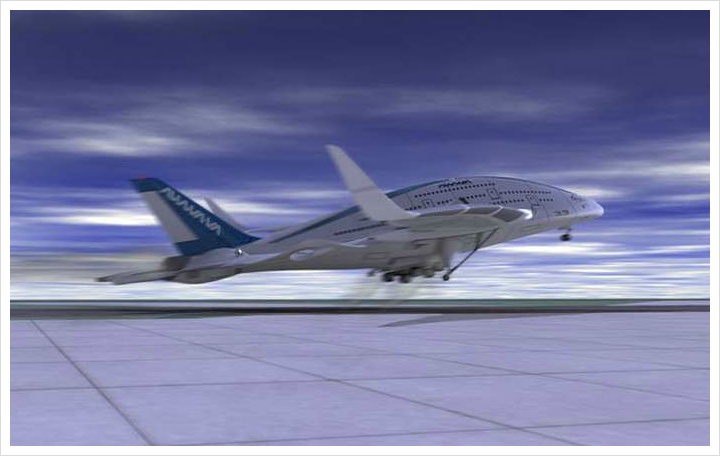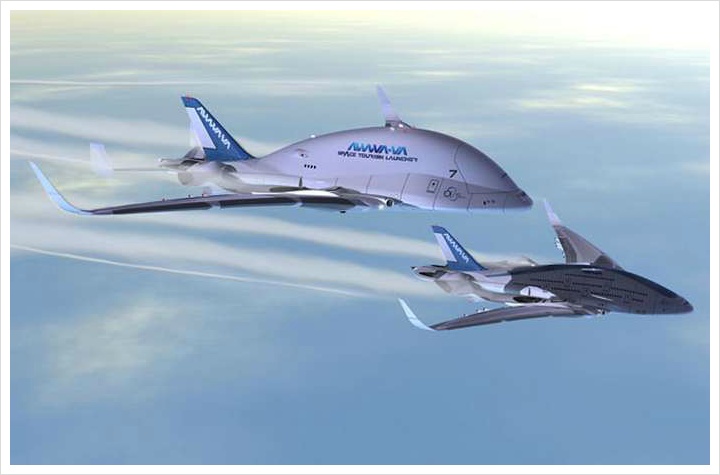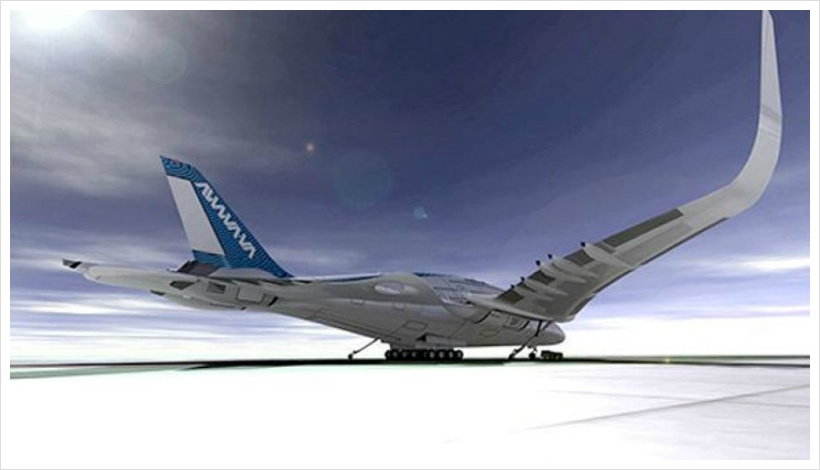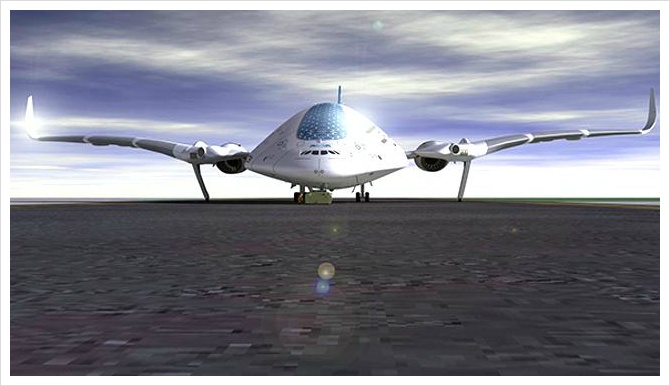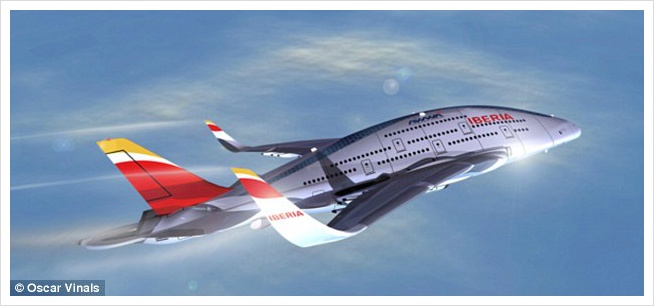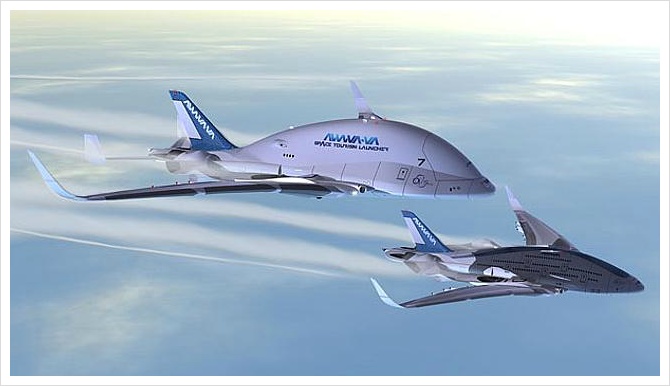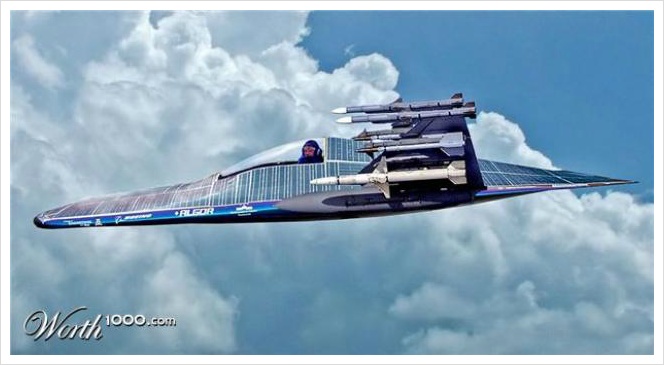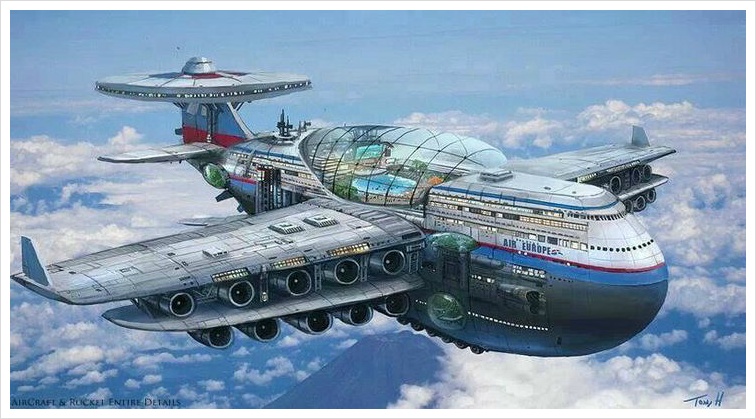
이 고래 모양의 비행기가 미래의 여객기?
Is this whale-shaped plane the future of airliners?
HyperDrive | 17 February 2014
by Jack Stewart
AWWA Sky Whale (Oscar Vinals) AWWA社 하늘 고래(스카이 웨일)
Airliners have become steadily bigger in an effort to take fit in more passengers and drive down the cost of tickets. Could a new outsized design change the way we fly?
여객기들은 항공권 비용을 내리고, 더 많은 승객을 태우기 위한 노력으로 꾸준히 점점 커져왔다. 우리가 하늘을 날아다니는 방식을 변화시킬 새로운 특대의 디자인을 할 수 있을까?
Spotting an Airbus A380 at an airport can still create great excitement. The giant, double-decker plane can seat between 500 and 850 people, depending on how much space is given to space-saving economy class, and how much goes to higher-paying passengers with all that extra leg room. It’s an aviation giant, the biggest passenger-carrying aircraft ever to fly the skies.
공항에서 에어버스 A380을 지켜보는 것은 여전히 큰 흥분을 일으킬 수 있다. 커다란 이층구조의 항공기는 어느 정도의 공간이 공간 절약의 이코노미 클래스(일반석)에 주어지고, 모든 여분의 다리를 뻗을 수 있는 공간과 함께 더 높은 요금을 내는 승객에게 얼마나 많이 돌아가는 지에 따라 500~850명의 사람을 태울 수 있다.
But the A380 could be become small fry if another, even more outsized design takes to the skies.
The AWWA Sky Whale is a concept aircraft from Spanish designer Oscar Vinals. With three decks for passengers, it looks like a cross between a tropical fish and a sci-fi space shuttle. Does this huge design herald the future of air travel?
그러나, 또다른 더 큰 특대의 디자인이 스카이들에 적용된다면 A380은 그다지 중요하지 않을 수 있다. AWWA社 스카이 웨일(하늘 고래)은 스페인의 디자이너 오스카 비날스가 디자인한 컨셉트(구상) 항공기이다. 승객들을 위한 3층 구조로, 그것은 열대어와 공상과학소설 우주 왕복선의 교잡종 처럼 보인다. 이 커다란 디자인이 미래의 항공 여행을 선도(예고)하나요?
Bigger means better in the world of airliners; the dawn of the jet age brought in the likes of the Boeing 707, an aircraft capable of carrying more passengers quicker and faster than any propeller-driven design. In the ensuing decades, airliners have grown larger and larger. The advent of “jumbo” designs, characterised by Boeing’s 747, meant more passengers per flight, and therefore cheaper seats.
더 크다는 것은 여객기 세계에선 더 좋다는 것을 의미한다; 제트기 시대의 시작은 프로펠러기 디자인 보더 더 신속하고 빠르게 더 많은 승객을 운반할 수 있는 항공기인 보잉 707에 대한 선호를 가져왔다. 다음의 수십년간에 여객기들은 점점 더 규모가 커졌다. "점보" 디자인의 출현은 보잉 747의 의해 특징이 나타났고, 더 싸진 좌석에 따라서 비행시 더 많아진 승객을 의미했다.
The plane would have swivelling engines for shorter take offs
비행기는 더 짧은 이륙을 위해 회전하는 엔진을 가질 수 있다.
“Travelling in the Sky Whale could be like a travelling in your private ‘theatre seat’, enjoying what happens around you; hearing some air flow noise, but feeling safe inside a big and intelligent structure,” Vinals says.
The design would use advanced technologies such as self-repairing wings, swiveling engines to enable a near vertical take-off, and hybrid propulsion.
“The engines and batteries are fed by a turbine inside the wings, like a high-speed and powerful dynamo,” says Vinals.
The design also calls for a system to redirect air flow to intake engines and to control laminar flow – in other words, to reduce turbulence around the plane and reduce drag.
None of these technologies are feasible on a large scale at the moment, but all are possible, says Vinals.
“I did this because I am an aerospace and aviation enthusiast – the technology, development and evolution,” he explains. “I would like to contribute, with my vision, about these.”
Perhaps that vision from someone outside the aerospace industry, without preconceptions, is what is needed to revolutionise plane design. Vinals told me he did “years” and “terabytes” of research. It’s an approach that some in the field appreciate.
“I think that’s where these concepts come in,” says Dr Michael Jump, lecturer in aerospace engineering at the University of Liverpool. “It’s people challenging through their imaginations. It’s the engineering community’s opportunity to either say ‘that’s a good idea, let’s try and make it happen’, or ‘it’s less of a good idea, and this is the reason why’”.
He says there are three factors to consider when evaluating the design of an aircraft, collectively known as the Breguet Range equation. This can be used as an estimate of efficiency.
The design would limit turbulence around the wings, thus decreasing drag
디자인은 날개 주변 난기류를 감소시켜서 항력(抗力)이 줄어들고 있다.
They are: propulsive efficiency (how efficient are your engines?); aerodynamic efficiency (is lift maximised and drag minimised?); and structural efficiency (how much payload can you carry?).
Generally airlines want to fly as far as possible, with the biggest load (or largest combined weight of passengers) possible, while using as little fuel as possible. If you can maximise all three, you technically have a better aircraft design. The major airliner manufacturers have made tweaks to this equation, but have largely stayed faithful to a tried-and-trusted design.
“The likes of Boeing and Airbus have a lot of experience of building aircraft that look like a tube and two wings,” says Jump.
“When it comes to a new airframe that they want to design, it makes sense to evolve rather than revolutionise.”
A cylinder is also a structurally efficient way to contain pressure, which aircraft must do to maintain the right air pressure for passengers when flying at high altitude.
The Airbus A380 (left) is currently the biggest airliner in the world
에어버스 A380(左)은 세계에서 현재 가장 큰 여객기이다.
Photo Gallery

